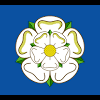Search the Community
Showing results for tags 'WW1'.
-
Good day, colleagues and sympathizers. Finally, I caught inspiration and" brought " to mind a couple of long-term projects.So-a British 3-ton truck.It was used in the British troops during the First World War.To be honest, I didn't go much into the history of the prototype, and there is little about it(well, or I don't know how to use Google, who knows?...) About the build. Miniart-well done. Traction, engine, controls - everything is very well detailed. But the problem, as always, lies in the poor quality of plastic and extremely peculiar injection molding.Half of the rods were eventually replaced with tubes/wire, etc. The hood assembly was also not pleased. The result - you see in front of you. Coloring - RealColor, Akan, Tamiya. Oils and pigments-Ammo and co. The junk in the back is a miniart and some other bags from the stash boxes. Thank you for your attention, enjoy watching!
-
First effort at posting some drawings. I'll build it bit at a time if it works. Any feedback more than welcome. RAL First one's a bit contrasty for a pencil drawing?
- 37 replies
-
- 15
-

-
- Short184 anti-submarine patrols
- Newlyn Lands End
-
(and 1 more)
Tagged with:
-
Dear all, Here is my first effort at a scratch build. This is modelled on Bristol Scout 1264 which lives at Old Warden in the Shuttleworth Collection. When I first set eyes on this pretty little biplane I decided I had to make one in 1/32 but no kit was available so with the encouragement of a friend I dived headlong into the scratch building pond. Although it took just over a year, most of the time was spent scratching my head, rubbing my chin and staring blankly into space. It is by no means perfect and I could spend forever retouching and refining things but if I take my glasses off it looks terrific to me from a distance and most importantly I had so much fun with this project. To anybody contemplating scratch building I would highly recommend just having a go. The materials are cheap or free, for instance the cowling is the lid of a sauce bottle. Anything you cock up can always be remade and you will learn a lot, especially about the virtues of planning and patience but above all you will have great fun. What have you got to lose? Anyway enough my random ramblings, here are the photographs, I hope you like the Bristol Scout and are encouraged to learn about this wonderful aircraft and have a go at scratch building something. 1/32 Scratch built Bristol Scout by Richard Williams, on Flickr 1/32 Scratch built Bristol Scout by Richard Williams, on Flickr 1/32 Scratch built Bristol Scout by Richard Williams, on Flickr 1/32 Scratch built Bristol Scout by Richard Williams, on Flickr 1/32 Scratch built Bristol Scout by Richard Williams, on Flickr 1/32 Scratch built Bristol Scout by Richard Williams, on Flickr 1/32 Scratch built Bristol Scout by Richard Williams, on Flickr 1/32 Scratch built Bristol Scout by Richard Williams, on Flickr 1/32 Scratch built Bristol Scout by Richard Williams, on Flickr Many thanks for looking in. Here is a link to the build thread in case you are interested Richie
- 34 replies
-
- 34
-

-

-
- WW1
- Scratchbuild
-
(and 1 more)
Tagged with:
-

Bristol Scout 1/32 first scratch build attempt
RichieW posted a topic in Work in Progress - Aircraft
After seeing this little beauty at Old Warden aerodrome and wanting to have a crack at scratch building something I decided it was time to dip my toe in the water. _V5A6869 by Richard Williams, on Flickr The first hurdle was making the cowling, I don't have a rotary tool so making cylindrical shapes is somewhat challenging. Luckily the top of an Encona Hot Pepper Sauce bottle is pretty much the perfect size. Bristol Scout 1264 Cowling by Richard Williams, on Flickr A bit of thinning with a milling head in a pin vice and removing the raised grips and it's there. I found a cheap resin Le Rhone engine on evil bay, a little surgery was needed to get it to fit but very little will be visible. 20200704_225156 by Richard Williams, on Flickr The frame took many efforts before it was usable, the tail feathers even more so. I think they're still a tad too thick so another attempt may happen. Scout framework. by Richard Williams, on Flickr Unfortunately I broke my thumb playing cricket last week so progress has stopped until I can handle tools again but I'm healing fast for an old bloke so hopefully I can whittle a prop, add some turtle deck formers and start detailing the interior next week. I am a total scratch building newbie so any advice would be very welcome. Thanks for reading. Richie- 219 replies
-
- 29
-

-
- Scratch buil
- WW1
-
(and 1 more)
Tagged with:
-
British Fighter Aircraft in WW1 Design, Construction and Innovation. By Mark C. Wilkins. Casemate Publishers. ISBN 9781612008813 The Great War heralded a fascinating era of aeronautical development, coming as it did just as the very first aviators and their machines were establishing themselves in Europe. As answers to various problems were sought a huge range of designs were tried, from tail first canards, pusher and tractor engines, monoplanes, biplanes, triplanes and more. This book is a natural follow on from the same authors previous work 'German Fighter Aircraft in World war 1', reviewed here in 2019. Filling 192 pages it is richly illustrated with around 250 photographs and drawings, many of them contemporary. It is printed on good quality glossy paper, dimensions 254mm x 203mm, between hardback covers. Sections are: Introduction The British Aircraft Industry The British and Colonial Aeroplane Company (B&CAC)/Bristol The Royal Aircraft Factory Aircraft Manufacturing Company (Airco) A. V. Roe & Company (Avro) Sopwith Aviation Company Engines and Props Conclusion Appendix 1: The 1915 Defence of the Realm act Appendix 2. Aircraft Designer Patents Notes Bibliography Modern full colour photographs are used to illustrate preserved machines such as those owned by the Shuttleworth collection. Others cover reproduction machines under construction such as John Saunders SE5a, and John Shaws beautiful Sopwith Camel, shown below: These are accompanied by detailed drawings/sketches of key components such as tailskids, interrupter gear, and others. All valuable information for modellers. I particularly liked the period advertisements, and factory shots of aircraft under construction which are very atmospheric. The major manufacturers are covered in dedicated chapters, featuring individual aircraft such as the Bristol Scout and F.2B, the RAF BE.2 and SE5a, Avro 504 (not really a fighter, but it fits in well) and Sopwiths Pup, Triplane, and Camel to name a few. This is rounded off with a very interesting chapter on engines and propeller manufacturing. Finally there is a selection of original patent drawings covering Avro's method of seat mounting to Sopwiths method of securing rigging wires (- and it's not a turnbuckle!). It is not a book to give you a detailed history of each aircraft, rather it describes the development of the various companies and some of the deigns they produced. There is as much information on Tommy Sopwith and the establishment of his famous company, as there is about the aircraft themselves. Plenty of anecdotes are sprinkled through the chapters, I particularly like the contemporary accounts from pilots. For example, Elliot White Springs, US 148 Aero Sqn "in a dogfight down low nothing could get away from it...a Camel could make a monkey out of an SE or a Fokker at treetop level but it couldn't zoom and it couldn't dive". Conclusion When looking back to earlier times, nothing is more important than context. To properly understand the story being told, the reader needs to be 'in the shoes' of the people of the time, and see things from their knowledge base and social values. This something this book does so well. The introduction and first chapter set the scene very well, setting out how British design lagged behind the French, and developed in different ways to the Germans. The author makes interesting points that I not considered before, such as the British use of the wooden box girder fuselage on all major designs throughout the war, while other nations used welded steel or plywood semi-monocoques. He also discusses how designs not only had to be good flying machines, but also had to be practical to build, transport, and maintain. There is a great deal of original thought and presentation that lifts this book above being just another book about First World War Aviation. It is a 'Sunday Morning' book, sit in your favourite armchair with a mug of tea, and spend a pleasant hour or so reading and enjoying this lovely book. There are a good few Sunday mornings to be had! Highly Recommended. Review sample courtesy of
-
In tandem with my ...slowboat... Shavrov Sh-2 build here on BritModeller, this marvellous example of Flash engineering hiding a Hansa Brandenburg aircraft within must be revealed as precisely what happens when your moulds become "cream-crackered". EE certainly knew the problem well, evidently, as does Roden. I have, then, for your reading pleasure, started this thing without due praise and/or reward because the H-B D.I was an interesting plane in its own light and the kit is becoming rarer now, most probably because nobody but me wishes to spend all day cutting through whole acres of flash. Hannants has a few left at the time of posting, iirc. The aircraft: Our HB D.I wil be: from Flik 16D, Serial: 28.30 flown by one Erwin Funk, a brilliant name that anyone would give their left Schwarzlose to possess. Here's a profile: (The angled gun is a typical Flik 16D modification as well as the enlarged windscreen, allegedly). I like the simple cherry coloured band on 28.30 because it ties in rather absurdly with a song from my favouritest indie popsters and, well, it gives me a go at smothering raw ochre oil paints over feeble acrylic undercoats; always time well spent in the life of a modern day artisan with his (or her) moustaches, fan brush and paisley cravat. TBC with pics ... and Best Wishes to you.
-
Hello ship fans, the dazzle camouflage of WW1 ships makes an attractive and challenging subject for ship modellers and I've been fascinated by this subject for many years. So, joy of joys, a new book on the subject has been published very recently: “The Easter Egg Fleet. American ship camouflage in WW1”, by Aryeh Wetherhorn? I received my copy (paperback version) yesterday and it is marvellous – reproductions of most of the USN and merchant dazzle plans (as per the Admiralty Orders in the IWM). Both port and starboard profiles are shown in most cases. These are preceded by a decent (although obviously American-biased) overview of international laws pertaining to maritime warfare, USN camouflage theories and practice, submarine warfare in context, the British connection, etc. Various photographs are not very well reproduced though. Fabulous stuff, and grist for doing one or two Caldwell/Wickes/Clemson flush-deckers or the earlier USN destroyer classes, plus several armoured cruisers and battleships that are available in kit form. I’ve just ordered a Combrig 1/700 USS Birmingham to build in its beautiful (actually Admiralty designed) camouflage. A pity that the IWM can't put together a compendium of its many Orders. Cheers, GrahamB
-
Hi everyone – work has been keeping me very busy of late, so here is my latest completion (my first in well over six months), the 1/48 Eduard Morane Saulnier Type N "Bullet". This is the 8090 non-profipack kit, released 15 years ago back in 2004. The kit is quite an easy build (which is what I needed, having not really built much recently), but I did make a few adjustments and additions here and there. I added some RFC style seatbelts, wiring for instruments, some spare Lewis drums in the cockpit, a gaspatch Lewis gun, some external details here and there, strengthened the tailplane by replacing the elevator shaft with brass tube, and replaced the kit wheels (which are way too small) with Eduard after-market RFC-style wheels. The markings came from the spares box. The kit was painted in the markings of A.175 of No 60 SQN, Royal Flying Corps. This was the machine in which the first Commanding Officer of 60 SQN, Major Francis “Ferdy” Waldron, was shot down and mortally wounded on 03 July 1916. The encounter is described thus in Alex Revell’s Osprey Book on 60 SQN RFC: “On the morning of 3 July, ‘Ferdy’ Waldron led 5 bullets in a patrol to decoy attention away from NE 2cs attacking St Quentin. Lts J H Simpson and D V Armstrong fell out with engine trouble, but Waldron, Lt H H Balfour and Capt R R Smith-Barry flew on, above the Arras to Cambrai road. Approaching Cambrai, a formation of enemy two seaters, led by a Fokker E Type was seen, followed by two additional Fokker monoplanes, bringing the number of enemy machines to around a dozen. Undeterred by these odds, Waldron immediately led Balfour and Smith-Barry in an attack. Harrold Balfour later wrote: ‘I’m sure they were not contemplating war at all but Ferdy pointed us towards them and led us straight in. My next impressions were rather mixed. I seemed to be surrounded by Huns in two-seaters’. Waldron was outmanoeuvred and attacked by a two seater, flown by Uffz Howe of FA5b. Balfour saw that his CO was in trouble and succeeded in driving off the enemy, but the damage was done. Waldron had been badly wounded, and although he managed to crash land his damaged Morane behind enemy line, he died of his wounds that night”. Indeed a brave chap, who suffered the same fate as many who courageously faced enormous odds in combat above the front lines. Anyways, here are some pictures: All in all, not my best build but certainly good to finally get a run on the board for 2021. All feedback welcomed as always! Cheers, Brad
- 11 replies
-
- 40
-

-

-
First a warning – you’ll have to bear with me before I get any actual build pictures up for this – it may run for a while as I’m attempting something I’ve never tried before and lockdown is limiting what I can actually do at the moment. I’ve also prepared quite a lot of this and done a few experiments already off-line, so to speak, so there’ll be a bunch of posts in quick succession to start off with. I’ve returned to model making a few times over the years since my first forays into the hobby as a kid. Each time I re-trace my childhood steps, starting with 1/72 Airfix fighter planes, moving up to 1/48 and then diverting into AFVs and figures. Each time, I push the boundaries a bit more in an attempt to learn new skills and discover new techniques. This time round, I’ve reached the figures stage and I recall as a kid, making use of Tamiya’s 1/12 racing driver kit as the basis for a couple of Napoleonic Hussar/Dragoon types. This seemed a good plan at the time – the racing driver was pretty cheap and modestly attired (separate helmet was a bonus) allowing various bits of lead foil, filler and scraps of plastic to be slapped on him to turn him into a variety of soldier types albeit sporting fetching 70’s Jackie Stewart hairdo’s. Now I’ve discovered a 21st century alternative. Bandai make an artist’s posable 1/12 mannequin called “body Kun” which is anatomically correct (well, there are a couple of bits missing, if you see what I mean) and in terms of movement, he can be posed in pretty much any position a real person would. My first thought was to use one of these, fuse his joints with superglue and simply dress him up, but at £20 a pop, it seems a bit pricey for each figure, especially as it’s something of an experiment and could all end up in the bin. I’ve ordered one anyway, to use (as the manufacturer intended) as a guide to my model-making/sculpting. In carrying out my research into all this, I also discovered that there’s quite a healthy world/market out there for 1/12 action dolls – I think GI Joe may have kicked it all off, being a little smaller than Action man. As a result, beautifully sculpted resin heads are available on the web for about £15, although they tend to be spiderman/Wolverine/Brad Pitt and so on; remarkably realistic and so instantly identifiable, but a good starting point. I’m keen to try sculpting, but a bit scared of tackling faces. Clothing is another area I’m more than a bit wary of – basically I’ve no sculpting experience at all, so I need all the help I can get. A diorama is building up in my mind’s eye…. WW1 British soldier has stormed a German trench, wildly brandishing his fearsome trench club, swinging at all and sundry in a berserk frenzy with his trenchcoat billowing around him. His foe is broken; a shellshocked German sits holding his head in his hands, resigned to his fate, photos of his sweetheart fluttering out of his bloodied hands and into the mud. The aim of all this carnage (for me) is to practice and hopefully achieve a realistic full-on action piece. My Tamiya racing squad were all stuck in the same rather louche pose and I want to see how far away from that I can get. So here’s the plan: · Dress (me) up in something approaching WW1 British uniform, at least in shape. Pair of old corduroy’s, walking gaiters for puttees, long sports jacket and trenchcoat. · Use 4 friends (may have to wait until lockdown has eased of course) to video front, back and both sides of me as I “swing into action” on their phones whilst one of them counts out load. I’ll also have a “measuring stick” on view so I can scale the resulting images accurately later. · Load these videos into basic editing software and align them (that’s where the counting comes in). · Capture a suitably dramatic/animated moment from each video to get front, sides and back views. I’ll print these slightly larger than 1/12 on paper, with the contrast pushed up to highlight clothing folds. · Pose the body-Kun doll in the correct position using the printouts behind (hence printed a bit larger). · Copy the pose using wire to form an armature. · Bulk out the body with (standard) miilliput to match the body-kun. · Create clothes using scaled sewing patterns I found on the web for WW1 British uniforms out of…. I’m not sure yet; some papery material TBC. Perhaps fag papers for thin cotton and J-cloth for thick wool. Maybe I’ll use superfine milliput or metal foil instead – not sure yet. · Apply the clothes piece by piece, supergluing spot points and sculpting (with PVA if I use “cloth”) to match the profile photos. · Stick on head and hands (body-Kun comes with a variety of hands, so I may try casting some resin copies). · Add 1/12 3D printed Lee Enfield I’ve seen for sale online. · Scratchbuild various apparel and stick on. · Paint. The same will go for the German, and then it just remains to build a trench diorama to place them in. Should be fun!
-
Hi All finally got this finished, looking at some early and mid 1918 photos I used those to judge the weathering etc, base and a figure or two to do. Cheers For Looking Mark
- 18 replies
-
- 40
-

-

-
Something to keep me occupied during the winter break Tamiya 1/35 Mark IV Male tank, take two by Jon Gwinnett, on Flickr Tamiya 1/35 Mark IV Male tank, take two by Jon Gwinnett, on Flickr Tamiya 1/35 Mark IV Male tank, take two by Jon Gwinnett, on Flickr
- 334 replies
-
- 12
-

-
Hi Everyone, Started my latest project, been looking forward to this, Meng MkV, Started it Two weeks ago, and following a different format, building more parts into sub assemblies and painting more parts on mass once assembled instead of all individual, seems to be working reasonably well. have only come across some minor fit issues, all with the side sponsons, I should be able to work it out after reading loads of tips in various posts, shame so much of the kit is hidden, just wish I had the skill to open up access panels to do it justice. Very impressed with the detail on the Ricardo engine, shame you will not see most of it. The rest of the engine cradle and drivetrain/clutch is rather nice too. Did no clean up at all on the rollers for the tracks, cut from sprue as close as I could and that’s it, they are totally hidden, added the PE plates on one side, but not on other, You cannot see them is one reason and also I may run some cables through here for the lights I am going to add to the interior, The guns look ace, currently researching correct/best colours for them, added the ally barrels from Aber Engine primed in Stynlrez Black primer, I think it has come out so well there is no point adding Black paint to it, just a little chipping and colour in places. Interior done yesterday, Stynlrez white primer, good enough as I think, then I decided even a new tank not long arrived in theatre probably would not still be white, so added Hataka interior Buff, definitely has right colour for tobacco and other staining, will be adding a bit more suitable grime as well. Got to tidy up engine cradle, should have at least painted that separately in retrospect, probably won’t see it I inside though. Got the idea of the cream colour from a good friend who did the work on the MkV at the IWM in London, then came across the Hataka Buff colour. So there is the progress so far, Cheers Mark
- 34 replies
-
- 14
-

-
It's 1916 and the German front lines have recently replaced their pickelhaubes with the new M16 steel helmets. Here we have a German officer leading a raid across no man's land in the hopes of bring back a couple prisoners to see what's all the mechanical noise they are recently hearing. Figures are modified Verlinden WW1 German figures by adding gas masks and the M16 helmets 1/16 scale. This was a longtime build which I probably started 10 years ago and just recently created the base and got it off the bench.
- 7 replies
-
- 21
-

-

-
- ww1
- no mans land
-
(and 1 more)
Tagged with:
-
Morane-Saulnier type 'N' Bullet. 1/32 Special Hobby The Morane Saulnier Type N first flew in May 1914, well before the outbreak of the Great war and was designed as a racer rather than a combat aircraft. Although a fairly modern looking machine, it lacked ailerons and used wing warping instead. The tailplane was all moving and only the rudder was hinged on the fin. It was fitted with a Hotchkiss machine gun which was not synchronized to fire through the spinning propeller, rather it used two large steel wedges to deflect the bullets off it. Thus equipped, a small number of them entered service in 1915 and although not popular to fly, they did help end the 'Fokker Scourge' of the German Eindekkers. The RFC bought a small number and also used them to effect. The kit is from Special Hobby, and even at 1/32 scale is quite small. I really like Special Hobby kits, they are very well moulded and fit together very well. This one comes with a resin engine, propeller, ammo belts and minor accessories. Also included is a nice etched brass sheet with engine details, seatbelts and turnbuckles for the brave to use! But the inexplicable thing is that nowhere in the kit are the large & prominent 'MS' circular logos that go on the cowling. Nada, Nothing, Zilch, not even anything on the decal sheet. This is a serious omission and I'm baffled why Special Hobby didn't provide them on the etch sheet. All is nit lost though, as Tom's Modelworks in the USA do a neat photo etched pair that you simply must get if building this kit. I have no connection with Tom's Modelworks, but must praise them for excellent service. I ordered the etched logos in the UK on a Saturday, and they arrived from the US the following Thursday. Amazing and much appreciated. The kit Instructions (and the Eduard 1/48 kit) show this particular aircraft as having red painted cow;ing/spinner areas on the fuselage. Reading the Windsock datafile, this seems very unlikely. All Morane-Saulnier aircraft of this period were finished with black enameled metalwork, and this is how they were supplied to the French Air Force and Royal Fling Corps. It was the RFC that initially repainted the black areas in red, to distinguish their machines from the Pfalz and Fokker Eindekkers. Later deliveries to the RC were painted red at the factory, but I am convinced that French machines remained with the black finish, so that is how I have done my model. The wing ribs were covered with thin bamboo strips of a lighter colour, I used Wingnut Wings German 'linen' rib tape decal strips. I spotted the Blackdog 'Escadrille Lafayette pilot' on the big H website and though he might go rather well with this and my SPAD V.II (when I get around to building it !). There were no painting instructions so I had to google a lot of it. Anyway, I hope you like it, it was a very enjoyable build. Thanks for looking, John
- 10 replies
-
- 29
-

-
- WW1
- Morane Saulnier
-
(and 1 more)
Tagged with:
-
Hello all, I am planning a project depicting Indian soldiers in the trenches of France in the First World War. However, the problem is that I haven't really been able to find anywhere that sells these figures and ships to India. Help please
-
I am in the process of building my first (well, for about 46 years, so, same thing really) model aircraft and I have a couple of questions about spraying suitable acrylic paint. I have built some model railway wagons and have sprayed using Vallejo model air with some success, using a badger velocity airbrush. I had a look at the colour requirements for the model (Eduard Fokker Dr.1 1/48 weekend edition) and first of all the colour references seem to be for Gunze or Mission models. I set about looking up equivalent colours in Vallejo model air. To my dismay I find that none of the colours I have in stock are the ones I need to use now, so I went to a local shop to buy some and they only had Humbrol enamels or Vallejo model colours, so I came home empty handed. I will obviously need to buy all the paints on the list so that got me wondering if it would be better to buy the paints as listed on the instructions sheet, but I wanted to get some input first. I know we all have our favourite brands, but I have been happy with Vallejo model air thus far, it sprays nicely, it doesn't really smell, and is reasonably cheap. But, I am aware that others may know better so, is it a case of "stick with what you know", or, "No, there are far better makes of paint out there which would suit far better" Another question, is it better to brush paint metallics? Thanks Tony
-
Two figures from Model Cellar.
-
Hi all, Here is my latest completion, the 1/72 scale Albatros D.Va from Airfix. This kit’s moulds date from 1957, making the mould around 63 years old! (that's 24 years older than I am...). This is the boxing from the early 2000s, picked up for $4 at a swap and sell. With this build, I wanted to re-kindle that child like feeling of building something for fun, with minimal modifications, and not a care for accuracy. To correct the ancient Airfix kit's flaws would be to scratch build an entire model. So, in the spirit of fun, I wanted to keep this one largely out of the box. Well, I say out of box, but I couldn't help myself. I made a couple of changes, but these were very basic, limited only to things I just couldn't live with. I added a rudimentary cockpit, replaced the engine and guns (both from Roden), heavily modified the spinner and replaced the spindly kit propeller, sanded and refined the flying surfaces, refined the detail on the wheels, sanded down the raised fuselage panels and re-scribed them (though I did keep the characteristic louvers and rivets on the nose – these are a prominent feature of the old mould, even if not entirely accurate). The model was painted with acrylics, with oil paints used for the ‘wood’ fuselage. The model was painted to represent the markings of a machine from Jasta 4, late 1917. Rigging is from elastic. I also had a little bit of a play with the display base, with a rough attempt to set the model on one of the old early 80’s release boxes (from the era where Palitoy owned Airfix… Palitoy released a number of Airfix kits with box art of the built model on a blueprint, for those that remember – of note, Airfix never re-boxed the Albatros in one of these boxings, so this makes it a little more quirky and unique as a base). As a final bit of fun, I also created a ‘box top’ for what may have been, had Airfix released this one during the Palitoy era in the early / mid 1980s: 😊 It was a fun little build, and definitely took me back to the earlier days of my modelling, with a slightly ‘modern’ twist. Feedback, comments and criticisms all welcomed. Cheers, BC
- 55 replies
-
- 96
-

-

-
- WW1
- Albatros DV
-
(and 1 more)
Tagged with:
-
Eduard Profipack Fokker DVII (Alb) finished as the machine of Ltn d R Carl Degelow of Jasta 40s, Lomme, August 1918. Thanks for looking. AW
-
Eyelet I will now explain how to do the one-end turnbuckles or eyelets. We need these parts for every rigging point in WW1 modelling. · As prime material, we need copper wire of 0.1mm. This wire you may get from AliExpress https://www.aliexpress.com/wholesale?catId=0&initiative_id=SB_20181117000435&SearchText=welding+wire+copper+0.1 · as soldering wire. You may get 200m on a spool. On the other hand, more expensive from Aber, in small quantities. · As second, you need a steel wire of 0.2mm to make a handsome hook out of it. Each limb of about 30mm long. · You need a strong fastener, to fix than the copper wire. How to start? 1. Take about 30mm of copper wire. Make a hook. But the steel wire hook under the copper wire hook, so you hold both limbs with the steel with the right hand and both limbs of copper wire with the left hand. Now turn maybe three times. 2. Put now your strong fastener on both limbs of the copper wire and turn some turns. Take it off, move the fastener forward to the steel hook, and stop about 3mm from it. Make some turns until the copper wire fit against each other. 3. If the fastener is too strong, or too sharp edged, he will cut your copper wire. So change it or alter it. 4. The eyelet is than finished. 5. Each hole you need is 0.3mm or maximum 0.4mm. Not more. 6. The function of these eyelet is approximately the same as dowel. The CA and the form of the eyelet prevent it from loosening. Cut it in proper length, so that after gluing only the lug can be seen. To drill: Each hole you need is 0.3mm or maximum 0.4mm. With the Tamiya pivot shaft drills, you have access to every point on the a/c and it prevents you for handling with too much force. https://de.aliexpress.com/item/Tamiya-74113-74114-74115-74116-Fine-Pivot-Drill-Bit-0-2mm-0-3mm-0-4mm-0/32678830579.html Happy modelling
-
I bought this kit in November 2018 at Telford the first year that Wingnuts attended. TheY brought with them a selection of kits some of which were damaged and this is one of them. It was about half the retail price at the time. It was marked WD on the box and on closer inspection it did have a crack in one fuselage side but not much else. This is the cracked fuselage side with a lot of stress bends. Here are the contents of the box with the box with the three A4 sheets of lozenge decals. This will be a pleasure to do and am looking forward to it and so will take my time. Let’s face it I am not going to be doing another one of these now.
-
B-Type Military Omnibus of the 91 Army Service Corps MTC. Ypres Spring 1915 Introduced in 1910, when most buses were still horse-drawn, the London General Omnibus Company (LGOC) B-type was London’s most successful mass-produced motor-bus. After the outbreak of war in 1914, London buses, along with their drivers and mechanics, were commandeered for the war effort. The buses were used to transport troops to and from the Front Line and were put to use as ambulances and even mobile pigeon lofts. Nearly 1,200 LGOC vehicles went on war service, most to France and Belgium, with some travelling as far afield as Egypt. Apparently a number of these buses went to France still in their LGOC red livery and after a few weeks they were painted in a more suitable colour by their crews. It seems likely that this was a khaki-green although contemporary witness accounts describe a wide variety of colours. It was also observed that quite often the khaki paint would be chipped and worn through and the old red colour would show through bringing back memories of when these buses had travelled London's busy streets in happier days. The windows would often get broken by the soldiers rifles and equipment so in the end they just removed the glass and placed wooden boards on the outside. I guess it also afforded the passengers little protection from stray shellfire. The detail and fit on Miniart's kit is excellent however many of the parts are very fragile making them difficult to remove from the sprues and clean up which led to a very slow build process. I did have to replace some of the linkages with brass rod. The wood grain in the plastic window boards provided in the kit were a little over done for my liking and in most of the photos I could find they seemed to use five boards rather than the six on the plastic items so I used some wood veneer strips to replicate them. I also wanted to have a couple of broken windows so I used some glass microscope cover slips to replace the plastic windows. I did actually paint the model in the LGOC red livery so that I could chip and rub through the khaki top coat to show some ware and tare. However by the time I added all of the mud and dust effects not much of that can be seen so in hindsight I would have saved a lot of time just adding some chipping etc on top of the khaki. The 'correct' Khaki or service colour from WW1 is often debated and I don't think there really is an exact colour so I went with what I think looks right. In this case for a base colour I used AK's Real Colors Khaki Green No3 with some gloss added to get a satin sheen. I cut some stencils from the scanned decal sheet and sprayed the markings on and then sanded them down to give a worn look. Weathering was then added using oils,paints and pigments. There are photos of a couple of these busses carrying a bicycle on the front platform. I thought this might make an interesting addition so I added one of the Masterbox kits. Overall I'm pretty pleased with the way this one has turned out. Hopefully Miniart will add a Pigeon Loft at some point or even a Mobile workshop. If you are interested in how this model went together there is a work in progress here. Wayne
-
It appears that Roden are to release the B type bus as the pigeon loft version kit no. 737. Markings for B2125 (1918) & B2132 (1916). Link to images...... https://shop.1-72depot.com/miniatures/1-72/vehicles-1-72/roden/roden-737-type-b-bus-pigeon-loft/
-
This is my first attempt at a Work in Progress so please bear with me on this one. After my last couple of tank builds became somewhat bothersome at the track stage I thought it was time to build something without tracks. I was going to build Miniart's B-Type lorry but I found the bus too tempting with plenty of scope for different weathering such as broken glass windows and worn down to the wood paint work etc. I think I will need to work on my figure painting skills as this is crying out for some war weary soldiers to be added in a small diorama. I will need to do some research on the subject though as it's not something I've really taken an interest in before. I have 'borrowed' some history notes from The London Transport Museums friends page. https://www.ltmuseumfriends.co.uk/projects/friends/project/24/battle+bus Introduced in 1910, when most buses were still horse-drawn, the London General Omnibus Company (LGOC) B-type was London’s most successful mass-produced motorbus, able to cope with operating conditions in the chaotic and overcrowded city. Building on lessons learned from earlier motor vehicles, the B-type quickly earned a reputation for mechanical reliability, helping to establish the motorbus as a practical vehicle for daily urban service in London. After the outbreak of war in 1914, London buses, along with their drivers and mechanics, were commandeered for the war effort. The buses were fitted with protective wooden boarding and painted khaki for camouflage. The buses transported troops to and from the Front Line and were put to use as ambulances and even mobile pigeon lofts. Nearly 1,200 LGOC vehicles went on war service, most to France and Belgium, with some travelling as far afield as Egypt. I wont do much in the way of sprue shots etc as all of this can be seen on MiniArts web page. https://miniart-models.com/products/39001-b-type-military-omnibus/ The box is certainly packed with parts though. All of the parts come tightly packed in one plastic bag and one of the rear fenders has snapped as a consequence, considering how delicate some of the parts are I was surprised that there wasn't more damage. I have to say that the quality and detail of the mouldings is exceptional and apart from one sprue that obviously has a mould issue there appears to be no flash, ejection pin marks or difficult sprue gates which will be a welcome change from Takom's Mk.10 Chieftain that I have just parked in the painting queue. I'm a little unsure of moulded wood effects, I often find them a little over done however I think MiniArt's representation would probably not look too bad once painted. I shall look more at that when I get there. Some of the parts look as though they could cause a little bit of stress in trying to remove them without breaking them, fortunately I have a brand new set of sprue cutters on their way to me. I'm really looking forward to getting started on this one. I'm not expecting it to be a particularly quick build but hopefully once I have started it will be one of those kits that I just can't put down. Wayne





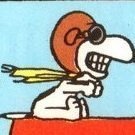
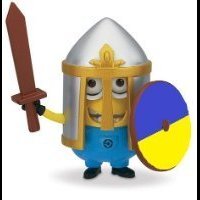
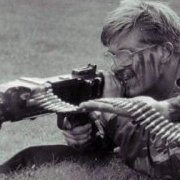
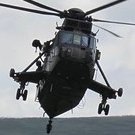
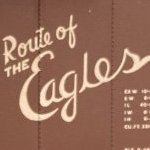


Wedge-TailedEaglePortraitRaptorDomains.thumb.jpg.41a306d3445a68f0f2df773e01776ea6.jpg)

